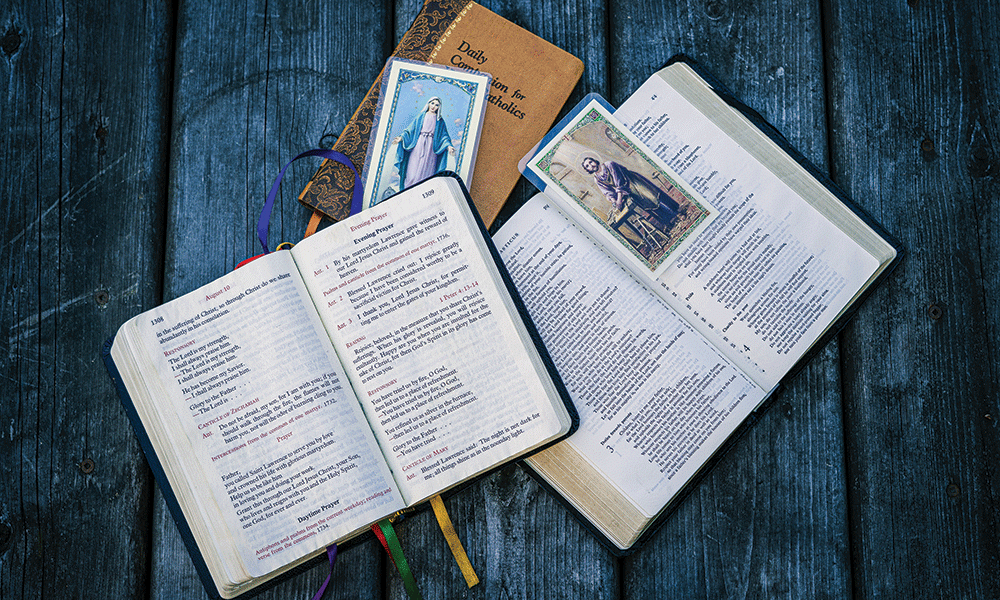
Praying with the Scriptures
Each month, we will provide a number of different resources to help your reading of the Bible. As Bishop Boyea has stated, he wishes for all of us to find Christ in our reading of Scripture. With that in mind, you will find several different forms of praying with the Scriptures – what the Church calls Lectio Divina. There will be similarities among them, but differences as well. Each of us has our own experience of Christ in prayer, depending on how God is working on us at the time.
Dawn describes below how she allows God to speak to her through the Scriptures.
Praying the Scriptures is a little different from reading the Scriptures for a Bible study. When praying the Scriptures, you are really trying to allow God to lead, inspire and bless you with what he wants to do and say to you. It’s less about trying to analyze what the Scripture means through understanding the mind of the author, the context of the historical time in which it was written or other forms of analysis. Let praying the Scriptures be more of God’s gift to you and your reception of that gift.
When praying the Scriptures, don’t worry too much about getting some “great” mystical revelation from God. Rather, know that this time with the Lord of reading and meditating on his Word is resting in his presence and is already a blessing. If he does give you some great insight that speaks into your life and situations you are dealing with, that is a great gift, too. Thank him for whatever he does in this prayer time. Really, he just delights in spending time with you … that is prayer my friends!
NOW FOR THE PRACTICAL STEPS:
- Take a few deep breaths and invite the Lord into this prayer time with you. Know that he is with you.
- In the silence of your heart, give God permission to lead you and inspire you in this prayer time.
- Now, once you are peaceful and collected, open the Scripture to the passage on which you plan to meditate. (I usually choose the Gospel reading of the Mass for the next day. In this Year of the Bible, I will read the chosen chapter of the day given by the bishop and focus in on just a little section of it that stands out to me after reading the whole thing one time through.)
- Read the passage one time through and just be still – “sit with it” for a few minutes.
- Read the same passage again and pay attention to any word, couple of words or a phrase that sticks out to you. Rest with that word for some time (maybe 5-10 minutes). Let it have the effect on you that God wants.
- Read the passage a third time and, after a few minutes, dialogue with the Lord about the word(s) that stuck out to you, what he may be saying to you through these words and how he may be applying this to your circumstances. Take note of any thoughts, emotions, insights or revelations that the Lord may be speaking to you. (Some examples of emotions that may arise that have meaning to you: joy, peace, hopefulness, correction/conviction, sadness, anger. Talk to God about whatever surfaces.)
- Take a moment to journal about what God is speaking to you if you have the time.
- Take note of any actions that God may be asking of you in response to what he has revealed to you.
- Thank him for this time together and his deep love for you.
- You may end this time of prayer with a Glory Be, Hail Mary or Our Father.
